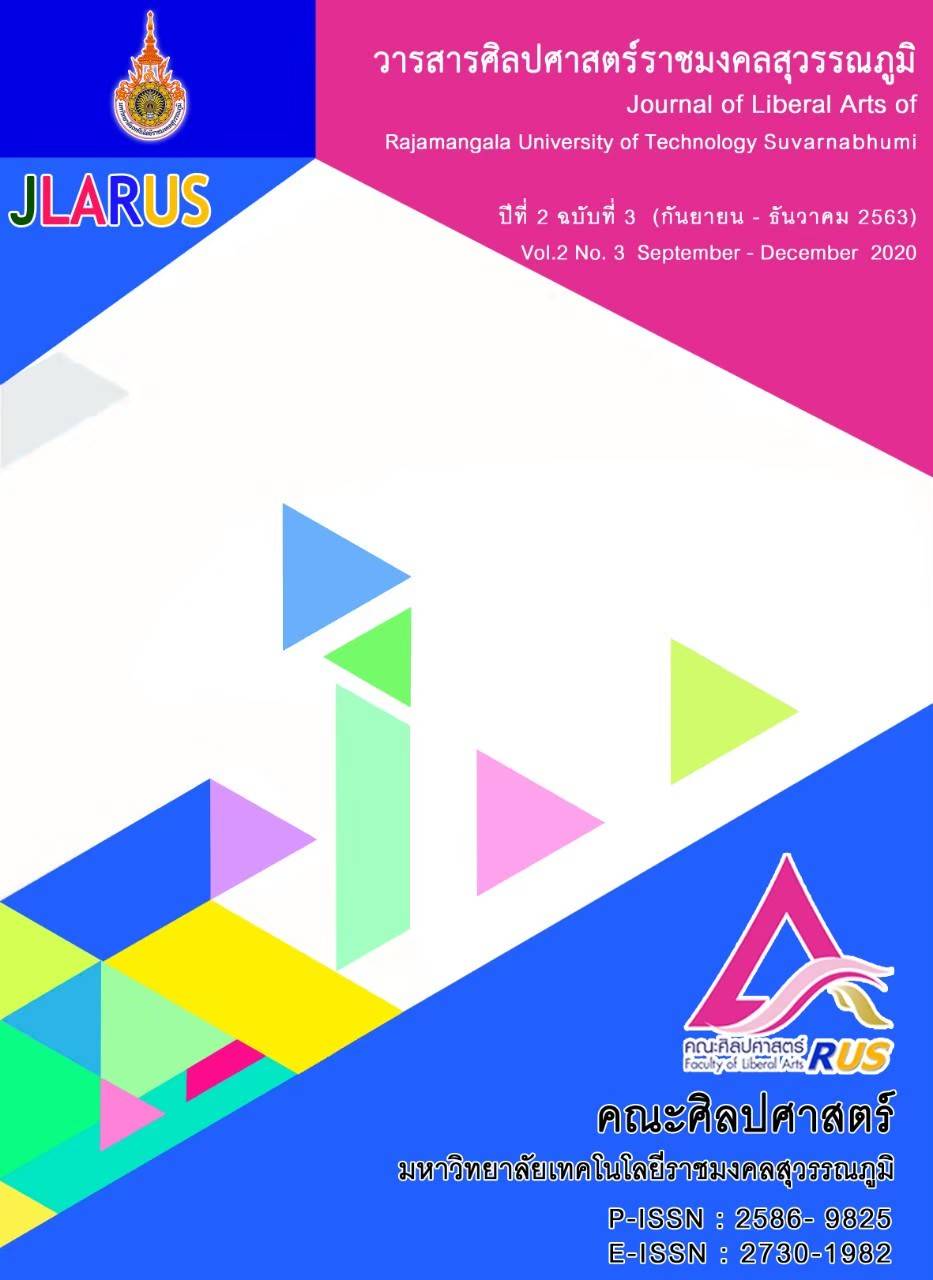THE WISDOM OF CREATING HUMOR IN THAI PARODY - CONTEMPORARY POETRY
Main Article Content
Abstract
This article aims to study the wisdom of creating a sense of humor in the contemporary Thai verse literature. The objective of this study is to study strategies for linking with the underlying literature and strategies for creating comedy by analyzing two contemporary poems namely “I therefore came to find the sorrow ” of Phaibun Wongthet and “Parasavatthi” from Komthuan Bowen. The study result showed that Thai contemporary verse literature uses 3 methods of linking with original literature: 1) Mimicking words; 2) Mimicking sounds; and 3) Mimicking poetry. Considering the ways to create humor, the 6 ways were found namely: 1) Creating content contrary to the original literature; 2) Creating content or ideas against one another; 3) Using language contrary to literary symbolism; 4) Contrasting; 5) Playing with the meaning of words and 6) Using words that represent sex. The study of parody literature in the genre of Thai contemporary poetry reflected the author's wisdom in language usage and poetry as well as showing the wisdom of society that uses parody literature as a means of expressing feelings and the humor of the Thai people.
Article Details
References
จันทิมา หวังสมโชค. (2549). กลวิธีสื่ออารมณ์ขันในละครตลกสถานการณ์ของไทย. (วิทยานิพนธ์ปริญญามหาบัณฑิต). กรุงเทพมหานคร: มหาวิทยาลัยธรรมศาสตร์.
จ่าง แซ่ตั้ง. (2528). ยามเช้า. กรุงเทพมหานคร: หจก.หนึ่งเจ็ดการพิมพ์.
จุลจอมเกล้าเจ้าอยู่หัว, พระบาทสมเด็จพระฯ. (2515). วงศ์เทวราช. กรุงเทพมหานคร: องค์การค้าของคุรุสภา.
โชษิตา มณีใส. (2540). การศึกษาวิเคราะห์วรรณกรรมล้อเลียนเรื่องระเด่นลันได. ใน รายงานการวิจัย. กรุงเทพมหานคร: มหาวิทยาลัยธรรมศาสตร์.
เนาวรัตน์ พงษ์ไพบูลย์. (2543). คำหยาด. (พิมพ์ครั้งที่ 6). กรุงเทพมหานคร: เกี้ยว-เกล้า พิมพการ.
ประคอง เจริญจิตรกรรม. (2551). ภูมิปัญญาในวรรณกรรม. วารสารศิลปศาสตร์, 8(1), 1-18.
__________. เพลงพิษฐาน. สืบค้น 12 ตุลาคม 2563. จาก www.nsru.ac.th.
ไพบูลย์ วงษ์เทศ. (2525). ฉันจึงมาหาความหงอย. กรุงเทพมหานคร: เจ้าพระยา.
ราชบัณฑิตยสถาน. (2545). พจนานุกรมศัพท์วรรณกรรม อังกฤษ-ไทย ฉบับราชบัณฑิตยสถาน. กรุงเทพมหานคร: ราชบัณฑิตยสถาน.
__________. (2546). พจนานุกรมฉบับราชบัณฑิตยสถาน พ.ศ.2542. กรุงเทพมหานคร: นานมี บุ๊คส์พับลิเคชั่นส์.
รื่นฤทัย สัจจพันธ์. (2537). วรรณกรรมปัจจุบัน. (พิมพ์ครั้งที่ 7). กรุงเทพมหานคร: รามคำแหง.
สุนทรี สังข์อยุทธ์. (2533). การวิเคราะห์ลักษณะเสียดสีในร้อยกรองไทยปัจจุบัน. (วิทยานิพนธ์ปริญญามหาบัณฑิต). กรุงเทพมหานคร: มหาวิทยาลัยสงขลานครินทร์.
สุภาษิตพระร่วง. (ม.ม.ป.) เอกสารประกอบการสอนวิชา ท. 651 จารีตในวรรณกรรมไทย. คณะศิลปศาสตร์ มหาวิทยาลัยธรรมศาสตร์. (อัดสำเนา)
สุมาลี วีระวงศ์ และคณะ. (2544). กวีนิพนธ์ไทยร่วมสมัย: บทวิเคราะห์และสรรนิพนธ์. กรุงเทพมหานคร: ศยาม.
อังคาร กัลยาณพงศ์ (2513). กวีนิพนธ์ของอังคาร กัลยาณพงศ์. (พิมพ์ครั้งที่ 2). พระนคร: ศึกษิตสยาม.
เอกวิทย์ ณ ถลาง. (2544). ภาพรวมภูมิปัญญาไทย. (พิมพ์ครั้งที่ 2). กรุงเทพมหานคร: อมรินทร์.
Abrams, M. H. (2538). A Glossary of Literary Terms. “อธิบายศัพท์วรรณคดี”. แปลโดย ทองสุก เกตุโรจน์. กรุงเทพมหานคร: ศูนย์พัฒนาหนังสือ กรมวิชาการ.
Drabble, Margaret and Stringer, Jenny, ed., (2003). The Concise Oxford Companion to English Literature. (2nd ed.). Oxford: Oxford University Press.


